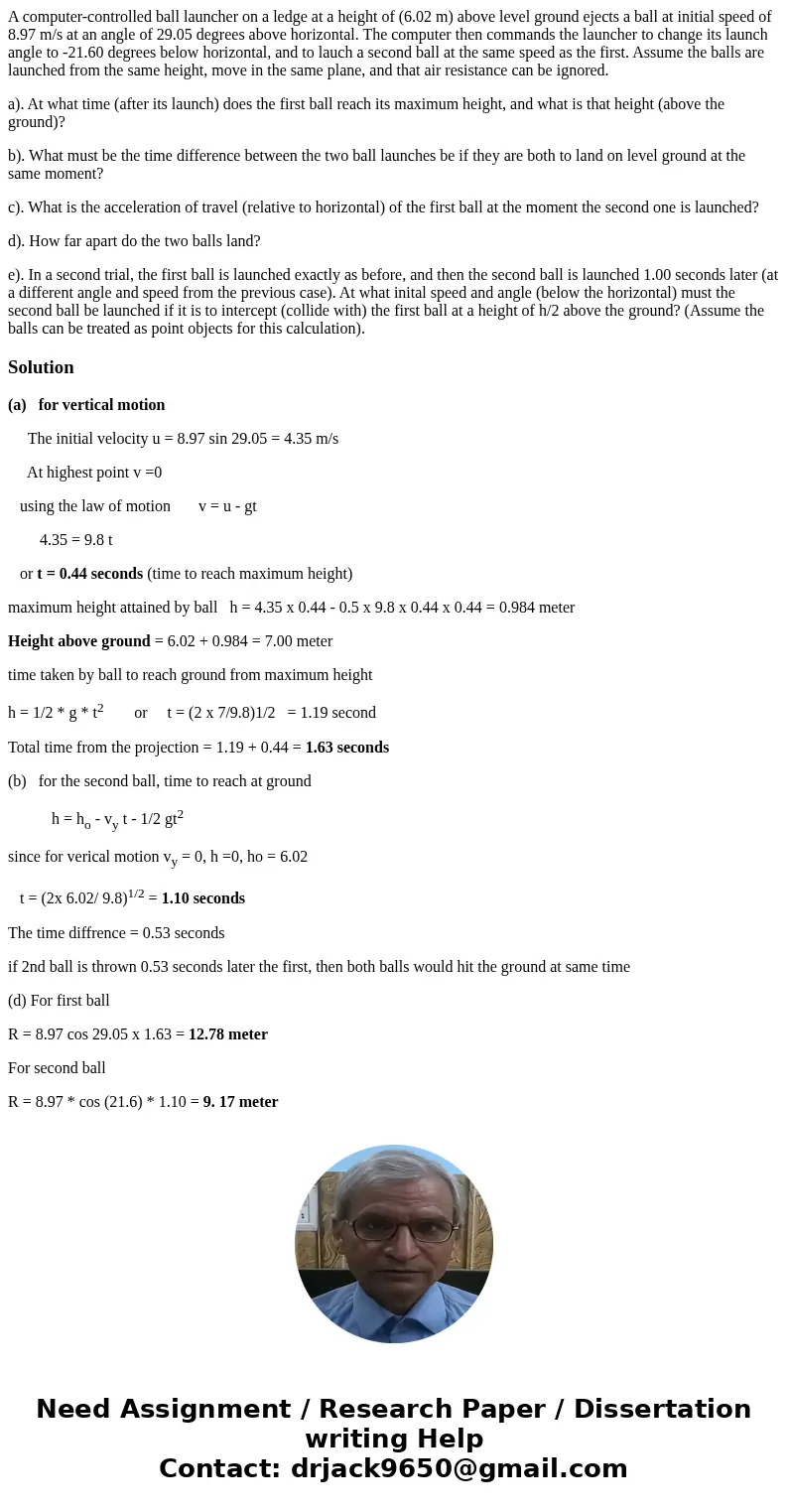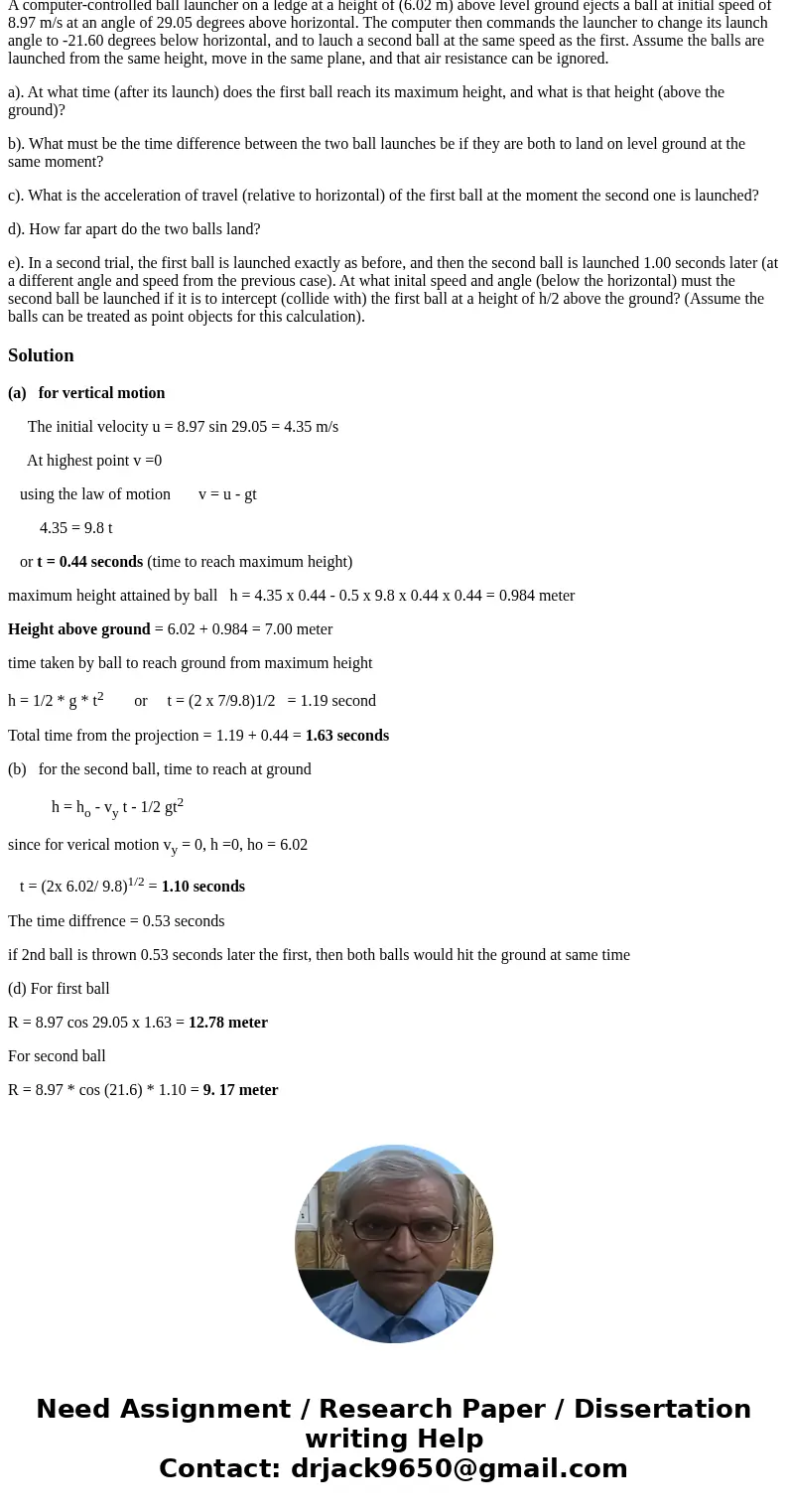A computercontrolled ball launcher on a ledge at a height of
A computer-controlled ball launcher on a ledge at a height of (6.02 m) above level ground ejects a ball at initial speed of 8.97 m/s at an angle of 29.05 degrees above horizontal. The computer then commands the launcher to change its launch angle to -21.60 degrees below horizontal, and to lauch a second ball at the same speed as the first. Assume the balls are launched from the same height, move in the same plane, and that air resistance can be ignored.
a). At what time (after its launch) does the first ball reach its maximum height, and what is that height (above the ground)?
b). What must be the time difference between the two ball launches be if they are both to land on level ground at the same moment?
c). What is the acceleration of travel (relative to horizontal) of the first ball at the moment the second one is launched?
d). How far apart do the two balls land?
e). In a second trial, the first ball is launched exactly as before, and then the second ball is launched 1.00 seconds later (at a different angle and speed from the previous case). At what inital speed and angle (below the horizontal) must the second ball be launched if it is to intercept (collide with) the first ball at a height of h/2 above the ground? (Assume the balls can be treated as point objects for this calculation).
Solution
(a) for vertical motion
The initial velocity u = 8.97 sin 29.05 = 4.35 m/s
At highest point v =0
using the law of motion v = u - gt
4.35 = 9.8 t
or t = 0.44 seconds (time to reach maximum height)
maximum height attained by ball h = 4.35 x 0.44 - 0.5 x 9.8 x 0.44 x 0.44 = 0.984 meter
Height above ground = 6.02 + 0.984 = 7.00 meter
time taken by ball to reach ground from maximum height
h = 1/2 * g * t2 or t = (2 x 7/9.8)1/2 = 1.19 second
Total time from the projection = 1.19 + 0.44 = 1.63 seconds
(b) for the second ball, time to reach at ground
h = ho - vy t - 1/2 gt2
since for verical motion vy = 0, h =0, ho = 6.02
t = (2x 6.02/ 9.8)1/2 = 1.10 seconds
The time diffrence = 0.53 seconds
if 2nd ball is thrown 0.53 seconds later the first, then both balls would hit the ground at same time
(d) For first ball
R = 8.97 cos 29.05 x 1.63 = 12.78 meter
For second ball
R = 8.97 * cos (21.6) * 1.10 = 9. 17 meter


 Homework Sourse
Homework Sourse